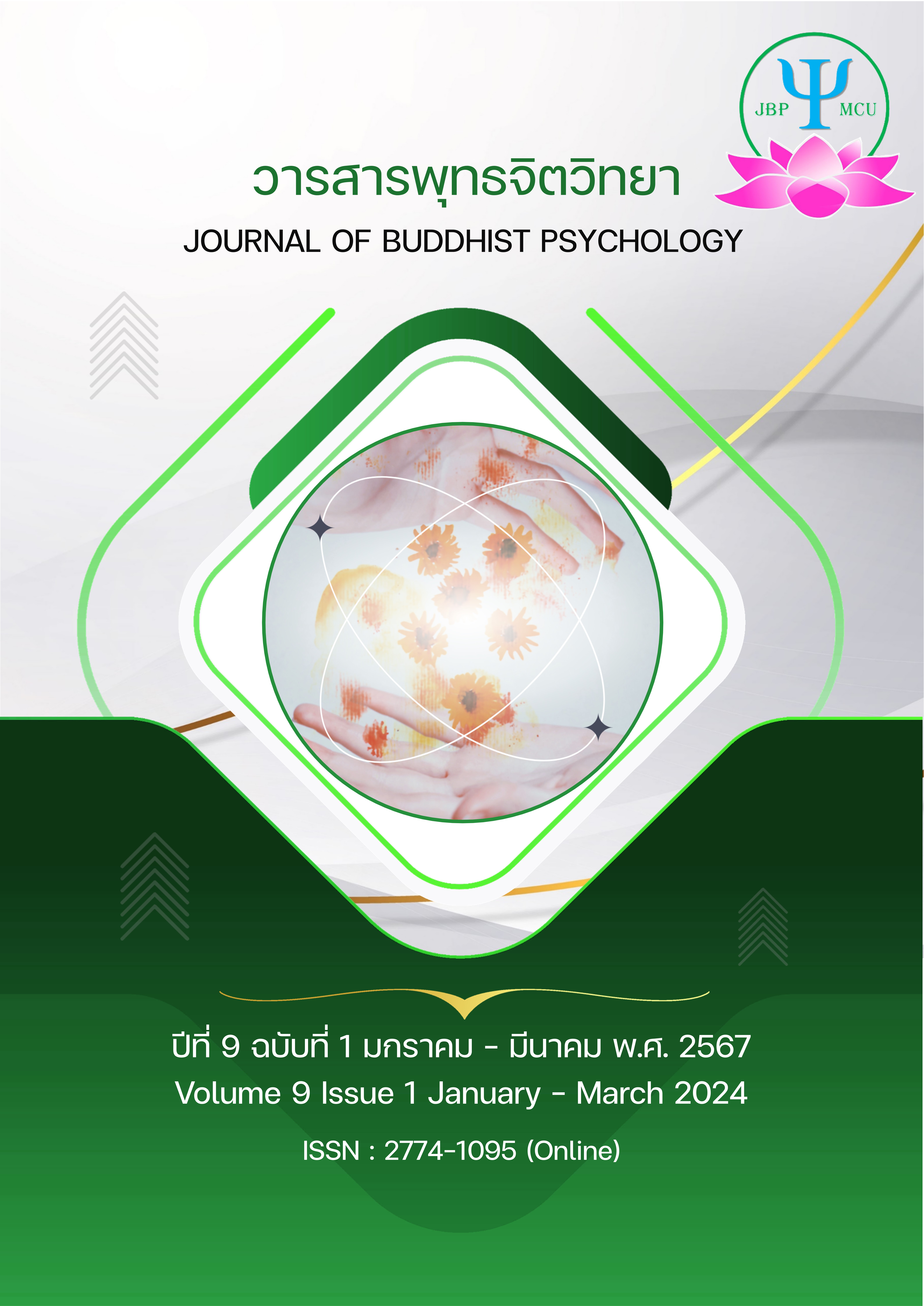Network Development and Strengthening of Mekong Buddhist Monks
Main Article Content
Abstract
The objective of this research article aims to investigate the engagement of monks and missionaries of Buddhism in the Mekong Region in various activities, explore the methodologies employed, and devise strategies for fostering the development and fortification of their networks. Employing a mixed-method research design, quantitative data were acquired through the administration of questionnaires and subsequently analyzed using descriptive statistical techniques. Qualitative data, on the other hand, were gathered through interviews and subjected to content analysis. It is worth noting that all samples were selected utilizing a purposive sampling approach to ensure relevance and representativeness in the study.
The results of this research were:
1. The examination of activities and involvement in network development among Buddhist monks in the Mekong Basin presents a favorable perspective. The average opinion level of respondents, which stands at 3.67, demonstrates a commendable level of engagement. Moreover, the standard deviation of 0.61 concerning activities and participation in network development suggests a consistent and cooperative effort. These findings imply the existence of a cohesive and collaborative network among Buddhist monks in the region.
2. Within the Mekong Region, there exists a supportive environment fostering knowledge exchange and positive relationships among individuals. A study investigating approaches for the development and enhancement of Buddhism in this region identified three key administrative components. Firstly, Buddhist principles, such as Aparihani Dharma, are employed in the management of network development. Secondly, various network management approaches are utilized. Thirdly, several components contribute to network development, including shared perceptions, views, visions, and interests, alongside the active participation of all network members. Additionally, mutual reinforcement, interdependent support, and exchange interactions further contribute to the strengthening of these networks.
3. In the endeavor to foster the development and fortification of Buddhist missionaries within the Mekong River Basin, several mechanisms have been identified. These mechanisms encompass: 1) Implementation of modern online communication channels 2) Establishment of mechanisms facilitating continuous meetings, exchanges, and collaborative activities among network members 3) Development of mechanisms aimed at enhancing the capabilities and potential of monks and missionaries within the Mekong region 4) Introduction of mechanisms dedicated to fostering innovative ideas, addressing communication challenges, disseminating novel approaches, and incorporating recommendations derived from research findings. Furthermore, it is recommended that Thai Sangha educational institutions prioritize the training of additional Buddhist missionaries. Additionally, it is advised that the Sangha Council take proactive measures to establish and reinforce networks aimed at supporting monks actively engaged in spreading Buddhism.
Article Details

This work is licensed under a Creative Commons Attribution-NonCommercial-NoDerivatives 4.0 International License.
References
ก่อสิทธิ์ กองโฉม. (2564, 10 กันยายน). เครือข่ายพระสงฆ์ลุ่มน้ำโขง เผยแพร่พุทธศาสนา. สืบค้นเมื่อ 15 ตุลาคม 2564, จาก https://www.dailynews.co.th/article/597162
นันทนา ขุนภักดี. (2530). การวิเคราะห์ความเชื่อของชายไทยในสวัสดิรักษา (พิมพ์ครั้งที่ 2). กรุงเทพฯ: มหาวิทยาลัยศิลปากร.
บุญชม ศรีสะอาด. (2544). การพัฒนาการสอน. กรุงเทพฯ: สุวีริยาสาส์น.
บูรกรณ์ บริบูรณ์. (2558). กระบวนการสืบสานเครือข่ายทางสังคมของพระสงฆ์ในการสร้างชุมชนเข้มแข็ง (รายงานผลการวิจัย). มหาวิทยาลัยมหาจุฬาลงกรณราชวิทยาลัย วิทยาลัยสงฆ์นครพนม.
พระครูปลัดกิตติพงษ์ กิตฺติโสภโณ (วงศ์สถาน). (2566). รูปแบบการจัดการเรียนการสอนวิชาพระพุทธศาสนาแบบใฝ่รู้ของโรงเรียนวัดแม่แก้ดน้อย อำเภอสันทราย จังหวัดเชียงใหม่. วารสาร มมร วิชาการล้านนา, 12(1), 1-10.
พระพรหมคุณาภรณ์ (ป.อ.ปยุตฺโต). (2548). พระพุทธศาสนาในอาเซีย (พิมพ์ครั้งที่ 2). กรุงเทพฯ: ธรรมสภา.
วัันชัย พลเมืองดี. (2562). การพัฒนาและเสริมสร้างเครือข่ายการเรียนรู้ข้ามวัฒนธรรมของกลุ่มอารยธรรม 5 เชียง กับการเสริมสร้างความเป็นพลเมืองในภูมิภาคลุ่มน้ำโขง. วารสาร มจร.หริภุญชัยปริทรรศน์, 3(2), 1-13.
สายชล ปัญญชิต, พฤทธิ์ ศุภเศรษฐศิริ, และชลวิทย์ เจียรจิตต์. (2564). เครือข่ายพระสงฆ์ลาว: กระบวนการสร้างชุมชนและทุนทางสังคมในสังคมไทย. วารสารสันติศึกษาปริทรรศน์ มจร, 9(5), 1876-1878.
สุนทรี สุริยะรังษี. (2565). การพัฒนาเทคนิคและวิธีการสอนครูพระสอนศีลธรรมในจังหวัดเชียงใหม่. ปัญญา, 29(3), 31-44.


